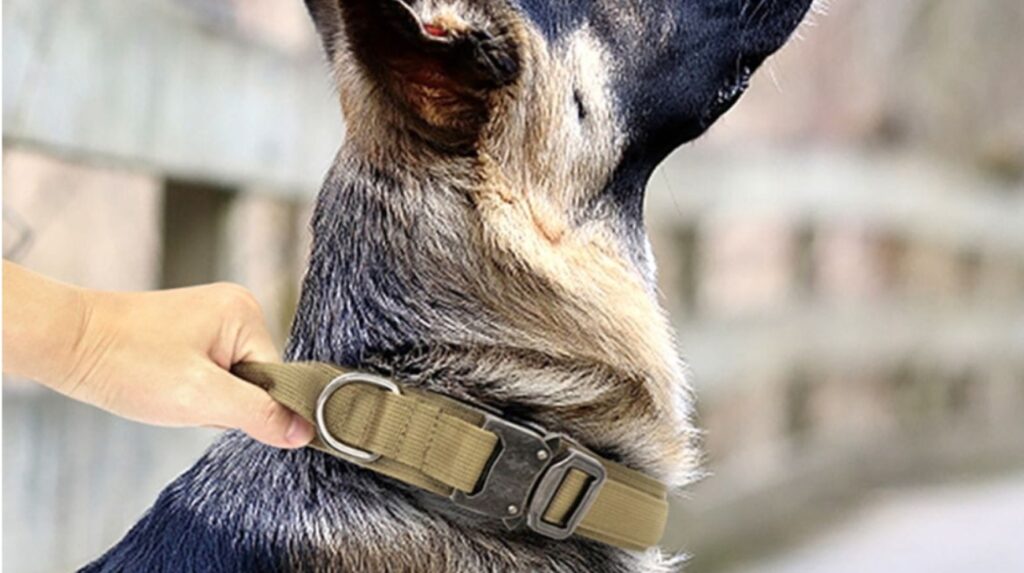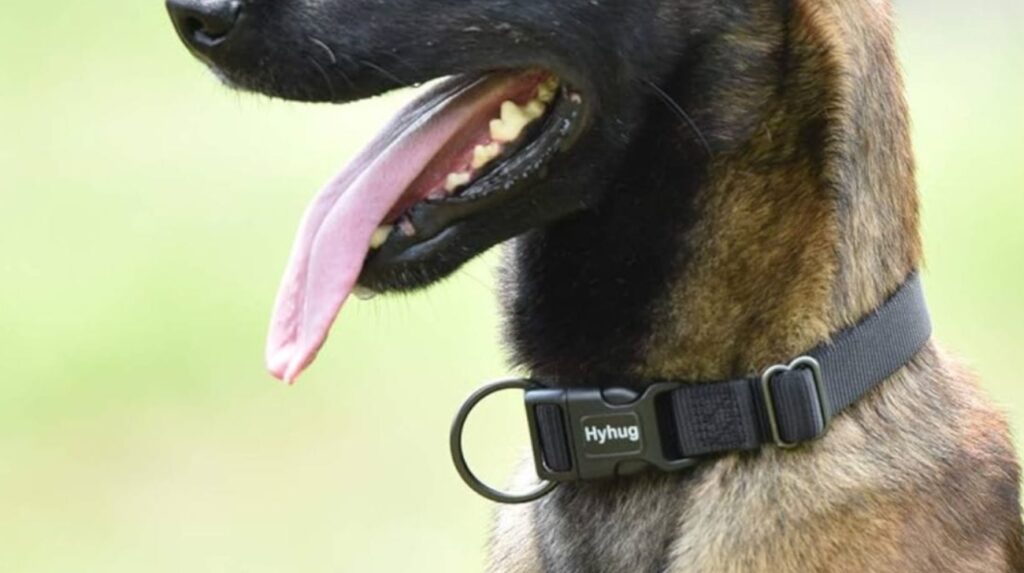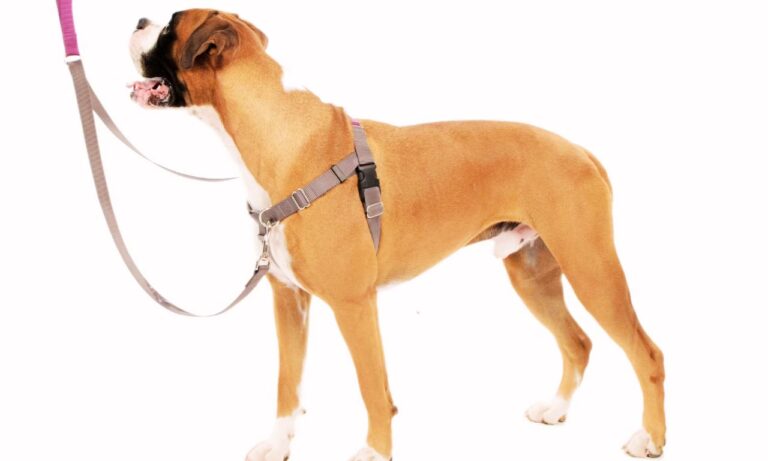Shock collars, also known as e-collars or electronic collars, are a popular training tool used by dog owners and trainers to manage behavior and reinforce commands. German Shepherds, known for their intelligence, loyalty, and sometimes stubborn behavior, are one of the breeds where shock collars are often considered for training purposes. Explore the best dog shock collar for German Shepherd to find top-rated options tailored for training this intelligent breed.
But the big question is: Does a shock collar work on a German Shepherd? Let’s explore this topic in detail, looking at how shock collars function, their benefits, potential risks, and how to use them responsibly.
Discover whether barking collars are effective in managing excessive barking and learn about their benefits and limitations.
Blog Highlights
ToggleWhat Is a Shock Collar?
A shock collar is a type of training collar that delivers a mild electric stimulus to the dog’s neck when triggered by a remote control. The collar is designed to help dog owners communicate with their pets, particularly when it comes to reinforcing commands or correcting unwanted behaviors.

Modern shock collars often come with adjustable settings, allowing the owner to control the intensity of the shock. Many collars also include other functions, such as vibrations or sound signals, which can be used as a less invasive form of correction.
How Do Shock Collars Work?
Shock collars work by delivering a small electric charge to the dog’s neck when the owner presses a button on a remote control. The idea is that the dog will associate the unpleasant sensation with the behavior it was performing at the time, which can help in discouraging that behavior in the future.

German Shepherd shock collar effectiveness: For example, if a German Shepherd is barking excessively, a shock collar can be used to deliver a correction each time the dog barks, teaching it to stop barking so much.
However, it’s important to note that the shock delivered by these collars is usually not very painful; it’s more of a surprise or an uncomfortable sensation that catches the dog’s attention. This is why many modern shock collars come with various levels of intensity, allowing the owner to start with the lowest setting and increase it only if necessary.
Learn how to use a remote dog training collar effectively to correct bad behavior in your dog.
Does a Shock Collar Work on a German Shepherd?
So, does a shock collar work on a German Shepherd? Yes, a shock collar can work on a German Shepherd, particularly for off-leash training and correcting behaviors like excessive barking or aggression. However, it should be used responsibly for German Shepherd behavior correction, with the lowest effective setting, and combined with positive reinforcement to avoid stress and anxiety.

Benefits of Using a Shock Collar on a German Shepherd
Using a shock collar on a German Shepherd can aid in off-leash training, correct undesirable behaviors, and reinforce commands effectively. These collars offer customizable settings, allowing for tailored training that suits the dog’s temperament and training needs:

- Off-Leash Training: One of the most significant benefits of using a shock collar on a German Shepherd is off-leash training. German Shepherds are often used as working dogs, and they need to be reliable off-leash. A shock collar can help ensure that your dog listens to commands even when it is far away from you.
- Behavioral Correction: Shock collars can be effective in correcting undesirable behaviors, such as excessive barking, jumping on people, or chasing after cars. Because German Shepherds are strong and active dogs, having a reliable way to control these behaviors is essential.
- Customizable Settings: Modern shock collars offer various settings, including beeps, vibrations, and different levels of shocks. This allows you to tailor the training to your German Shepherd’s specific needs. For example, you might start with a beep to warn your dog before delivering a shock, giving it a chance to correct its behavior on its own.
- Quick Results: When used correctly, shock collars can provide quick results. This is particularly useful for behaviors that need to be corrected immediately, such as when a dog is about to run into the street or chase after another animal.
Risks and Considerations
While shock collars can be useful, they are not without risks. Here are some things to consider before deciding to use one on your German Shepherd:
- Stress and Anxiety: Some dogs may become stressed or anxious when they receive a shock, especially if the collar is used incorrectly. This can lead to other behavioral issues, such as increased aggression or fear.
- Misuse and Overuse: If a shock collar is used too often or at too high a setting, it can cause physical and emotional harm to the dog. It’s important to start with the lowest possible setting and to use the collar only when necessary.
- Dependence on the Collar: There’s a risk that your dog might become dependent on the shock collar and fail to learn proper behavior without it. It’s important to combine the use of a shock collar with positive reinforcement techniques, such as giving treats or praise when your dog behaves correctly.
- Not a Substitute for Training: Shock collars should never be used as a substitute for proper training. They should be one part of a comprehensive training program that includes commands, rewards, and consistent practice.
Understand the difference between an e-collar and a shock collar and which might be best for your dog’s training needs.
When to Use a Shock Collar
Shock collars should be used carefully and only in certain situations. Here are some guidelines on when to consider using a shock collar for your German Shepherd:

- Off-Leash Control: If your German Shepherd tends to ignore commands when off-leash, a shock collar can help you regain control and ensure your dog’s safety. This is particularly useful in situations where your dog might encounter dangers, such as busy streets or aggressive animals.
- Correcting Dangerous Behaviors: If your dog exhibits behaviors that could be dangerous, such as chasing cars, running away, or showing aggression towards other animals, a shock collar can help you correct these behaviors quickly and effectively.
- Reinforcing Commands: Shock collars can be useful in reinforcing commands, especially when your dog is at a distance. For example, if your German Shepherd doesn’t always come when called, a shock collar can help reinforce the command by providing a mild correction if your dog ignores you.
Alternatives to Shock Collars
If you’re concerned about the potential risks of using a shock collar, there are alternatives to consider:
- Positive Reinforcement: This method involves rewarding your dog for good behavior rather than punishing it for bad behavior. For example, you might give your dog a treat when it comes when called or stays quiet when asked. Positive reinforcement can be very effective, especially for intelligent breeds like German Shepherds.
- Clicker Training: Clicker training is a method of positive reinforcement that uses a clicking sound to signal to your dog that it has done something right. The click is immediately followed by a reward, helping your dog to associate the sound with good behavior.
- Professional Training: If you’re struggling to train your German Shepherd on your own, consider hiring a professional dog trainer. A professional can help you develop a training plan that’s tailored to your dog’s specific needs and behavior.
If you decide to use a shock collar, make sure to educate yourself on how to use it correctly, and consider consulting with a professional trainer to ensure that you’re using the collar in a way that’s safe and effective for your dog. And remember, the goal of training is to build a strong, trusting relationship with your German Shepherd, and that requires patience, consistency, and love. Find the best remote control dog training collar by exploring top options for obedience and behavior correction.
Conclusion: Do Shock Collars Work on German Shepherds?
In conclusion, shock collars can be an effective tool for training German Shepherds, particularly for off-leash training and correcting dangerous behaviors. However, they must be used responsibly and as part of a broader training program that includes positive reinforcement.
Discover what it means when a dog wears a red collar and how this can indicate specific information about the dog.
It’s important to start with the lowest setting and to avoid overusing the collar, as this can lead to stress, anxiety, and other behavioral problems. Hope so, now you know does a shock collar work on a German Shepherd.





